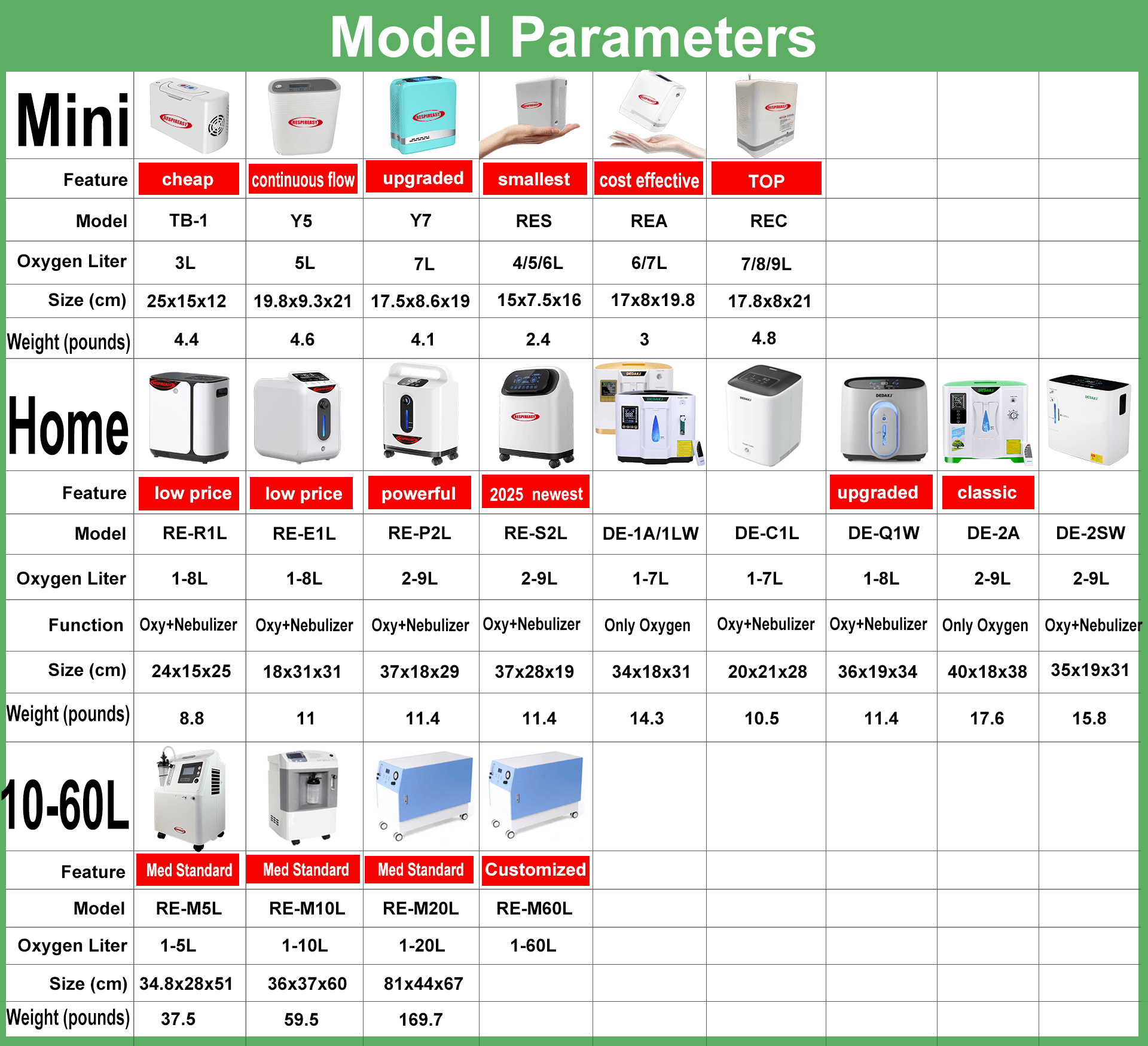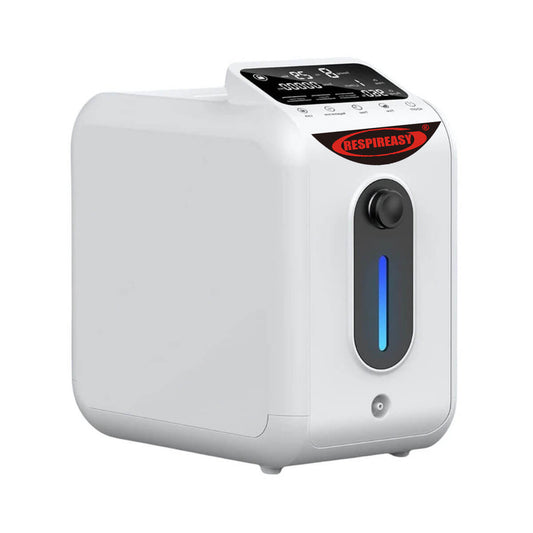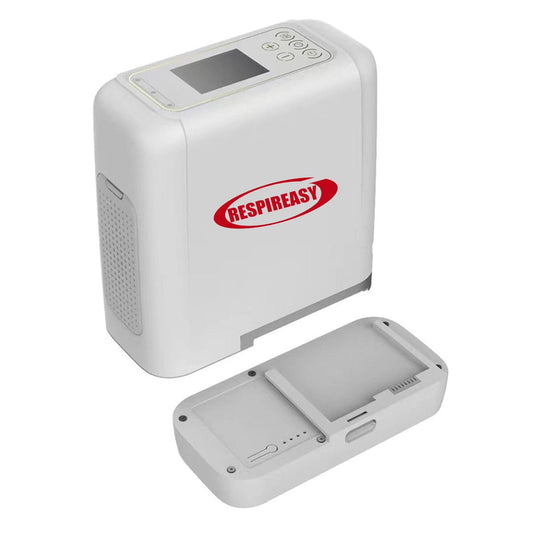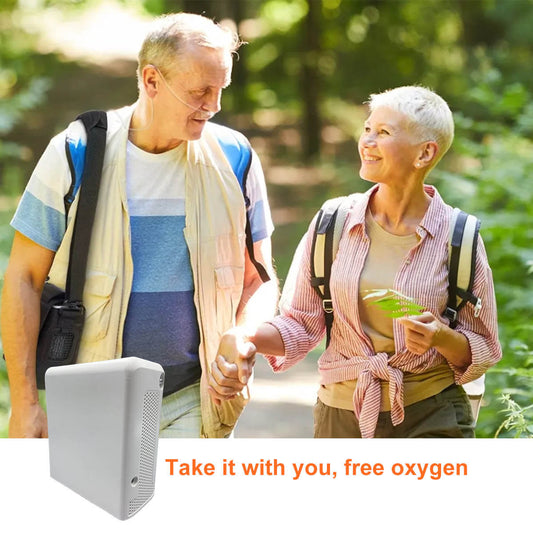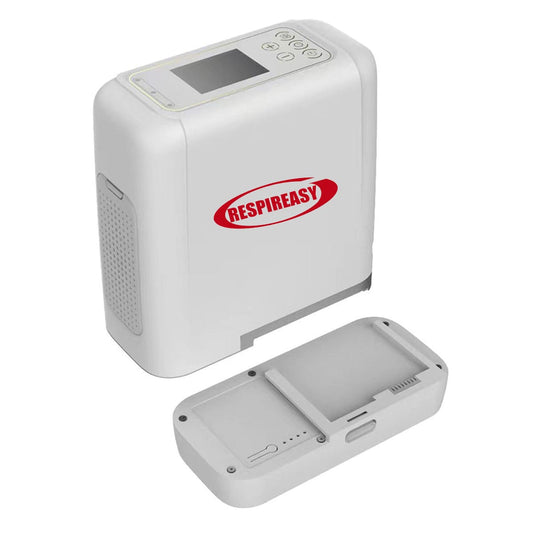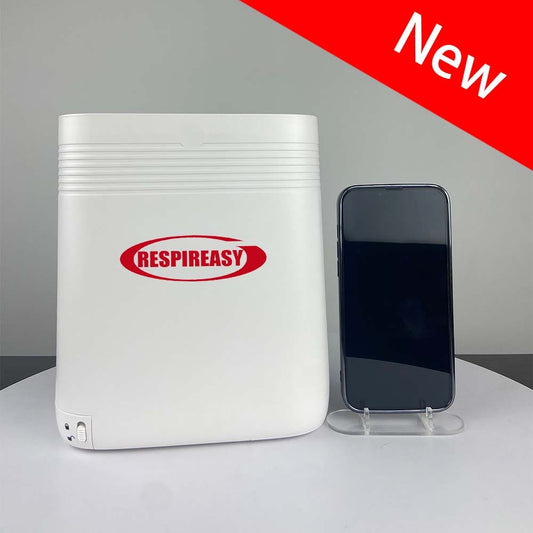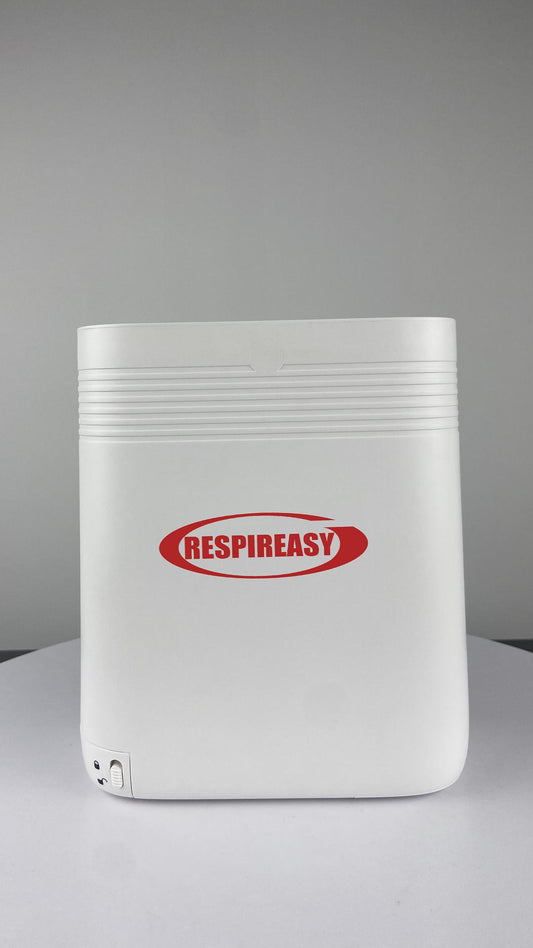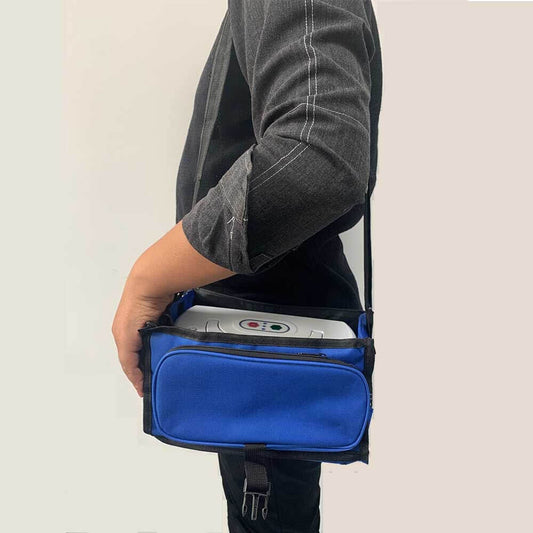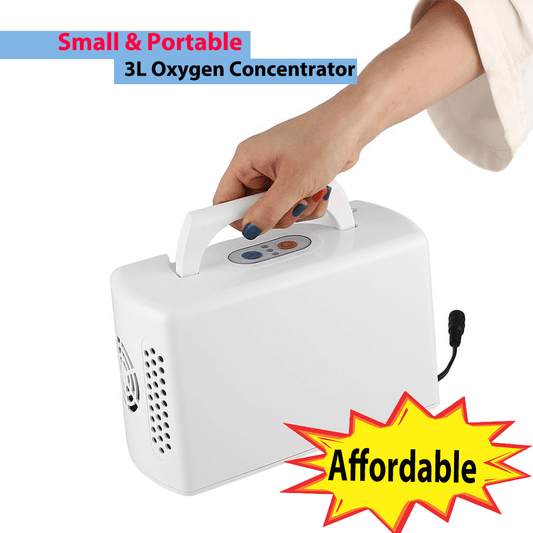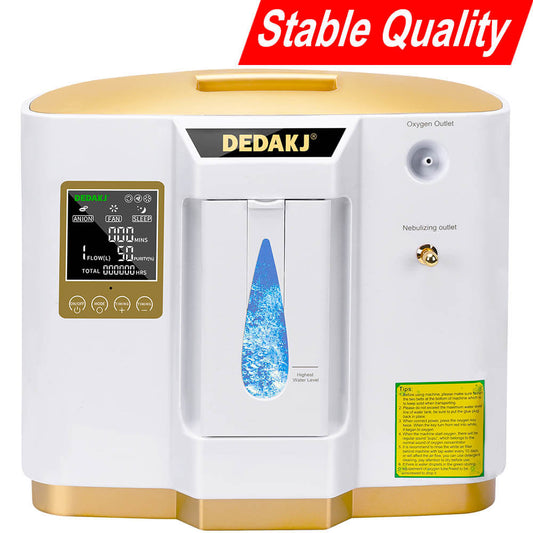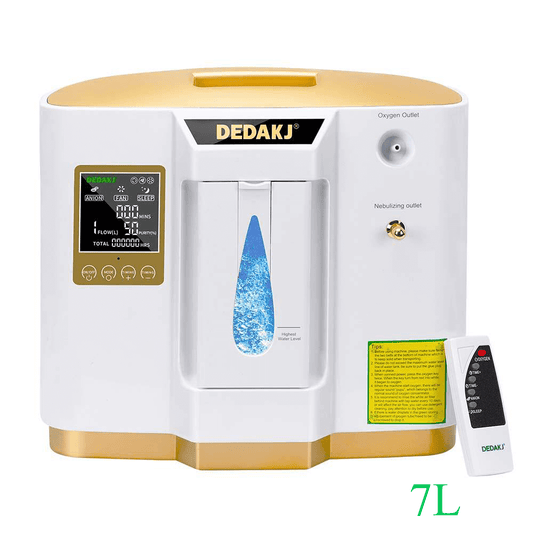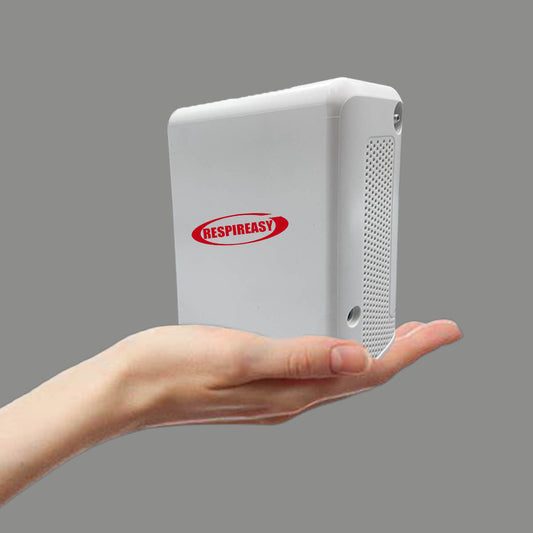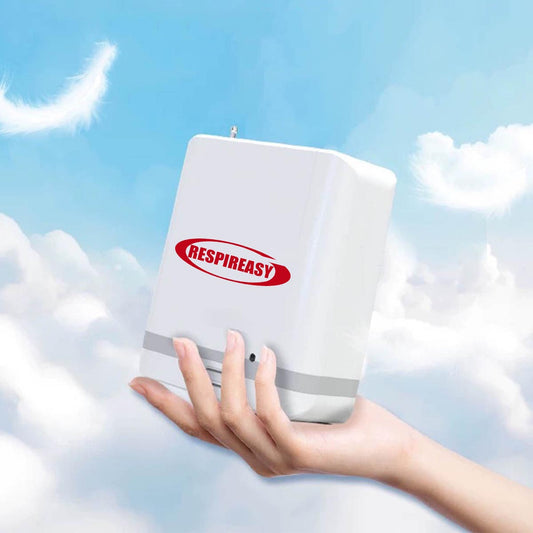I) Home Oxygen Concentrator Principle
Home oxygen concentrators utilize the PSA (Pressure Swing Adsorption) principle. A compressor compresses air, which is then passed through a molecular sieve. Nitrogen and oxygen have different adsorption properties, allowing for nitrogen separation. This is a purely physical method of oxygen production, with no consumables or waste gas generated.
Therefore,
the core components of an oxygen concentrator are: compressor and molecular sieve.
The principle of an oxygen concentrator is: physical oxygen production, with no raw materials or consumables.
Identifying the Suitable Population
Not everyone needs long-term oxygen therapy. The following groups should use a home oxygen concentrator under the guidance of a doctor:
1. Patients with chronic respiratory diseases
COPD (Chronic Obstructive Pulmonary Disease): This is the primary target population for home oxygen concentrators. When arterial blood oxygen partial pressure ≤55mmHg or blood oxygen saturation ≤88%, long-term home oxygen therapy (≥15 hours of oxygen inhalation per day) is required;
Pulmonary fibrosis, pulmonary embolism;
Asthma acute exacerbation remission: If hypoxemia (blood oxygen <90%) is present, short-term oxygen inhalation can be used to assist recovery.
2. Patients with cardiovascular and cerebrovascular diseases: Coronary heart disease, heart failure; Insufficient blood supply to the brain: such as during the recovery period of cerebral infarction.
3. Individuals with hypoxia under special conditions: Sleep apnea syndrome: those with significant nocturnal hypoxia; Altitude sickness; Elderly, frail individuals, or those in the postoperative recovery period.
Note: Healthy individuals (such as pregnant women without hypoxia symptoms, students) do not need to use oxygen concentrators for "health maintenance." Excessive oxygen inhalation may damage the respiratory mucosa or lead to oxygen toxicity.

👍👍👍2025 Small Lightweight Oxygen Concentrator 7 Liter 93% Purity Mini Portable O2 Generator Oxygem Machine Low Noise with Lithium Battery
II) Classification of Home Oxygen Concentrators:
Divided into home station models and portable models.
1) home station models: Classified by flow rate, including 1-liter, 2-liter, 3-liter, 5-liter, and 10-liter models.
Classification of Home Oxygen Concentrators:
2) Portable oxygen concentrators: Developed to solve the problem of carrying oxygen while traveling. They operate on the same principle as desktop models, but due to their small size, they cannot provide continuous oxygen production. They only provide pulsed oxygen, instantly injecting a fixed amount of oxygen in response to the user's inhalation. They are available in 3, 5, 6, and 7 speed settings.
Pulsed oxygen therapy has high oxygen delivery efficiency; typically, a level 3 machine is equivalent to 3 liters of oxygen in a desktop unit, and a level 5 machine is equivalent to 5 liters.
Portable oxygen concentrators are mainly used for temporary oxygen supply when traveling, and for oxygen supply during high-altitude travel.
III) Key Points for Choosing an Oxygen Concentrator
1) Flow Rate: Consider the user's required oxygen flow rate, allowing for a margin of error. For example, if the user normally needs 1.5 to 2 liters, a 3-liter machine is sufficient; if 2-3 liters are needed, a 5-liter machine is recommended.
2) Duration: Consider the user's daily oxygen intake duration and the oxygen concentrator's performance. For a few hours a day, a 3-liter concentrator is sufficient; for more than 10 hours, a 5-liter concentrator is recommended.
3) Noise: If the user is sensitive to noise, consider the machine's noise level.
Most oxygen concentrators operate at 50-60 decibels, while quiet models can achieve 40-45 decibels. The latest four-cylinder compressors can even achieve around 30 decibels.
4) Size: The size of the oxygen concentrator is not actually that important. Manufacturers often make the machines large because they may use higher-quality components (compressor, molecular sieve), and the larger size also facilitates heat dissipation and sound insulation. 5) Brand: Choose a manufacturer specializing in oxygen concentrators; quality will be more guaranteed, and after-sales service will be better.
5) Individual Circumstances: For simple health maintenance and normal blood oxygen saturation, a 1-liter or 2-liter oxygen concentrator can be considered. However, if blood oxygen saturation is usually below 94%, a 3-liter oxygen concentrator is required as a starting point.
6) Additional Functions: Real-time oxygen concentration display (to understand oxygen production status), nebulization (for occasional nebulization, a backup function), voice prompts (voice prompts are helpful for people with poor vision), electronic flow meter (for precise flow adjustment), remote control, timer.
7) Combined Use: When used with a ventilator, a 5-liter oxygen concentrator is recommended. When used with a high-flow humidifier, a 10-liter oxygen concentrator is recommended.






























